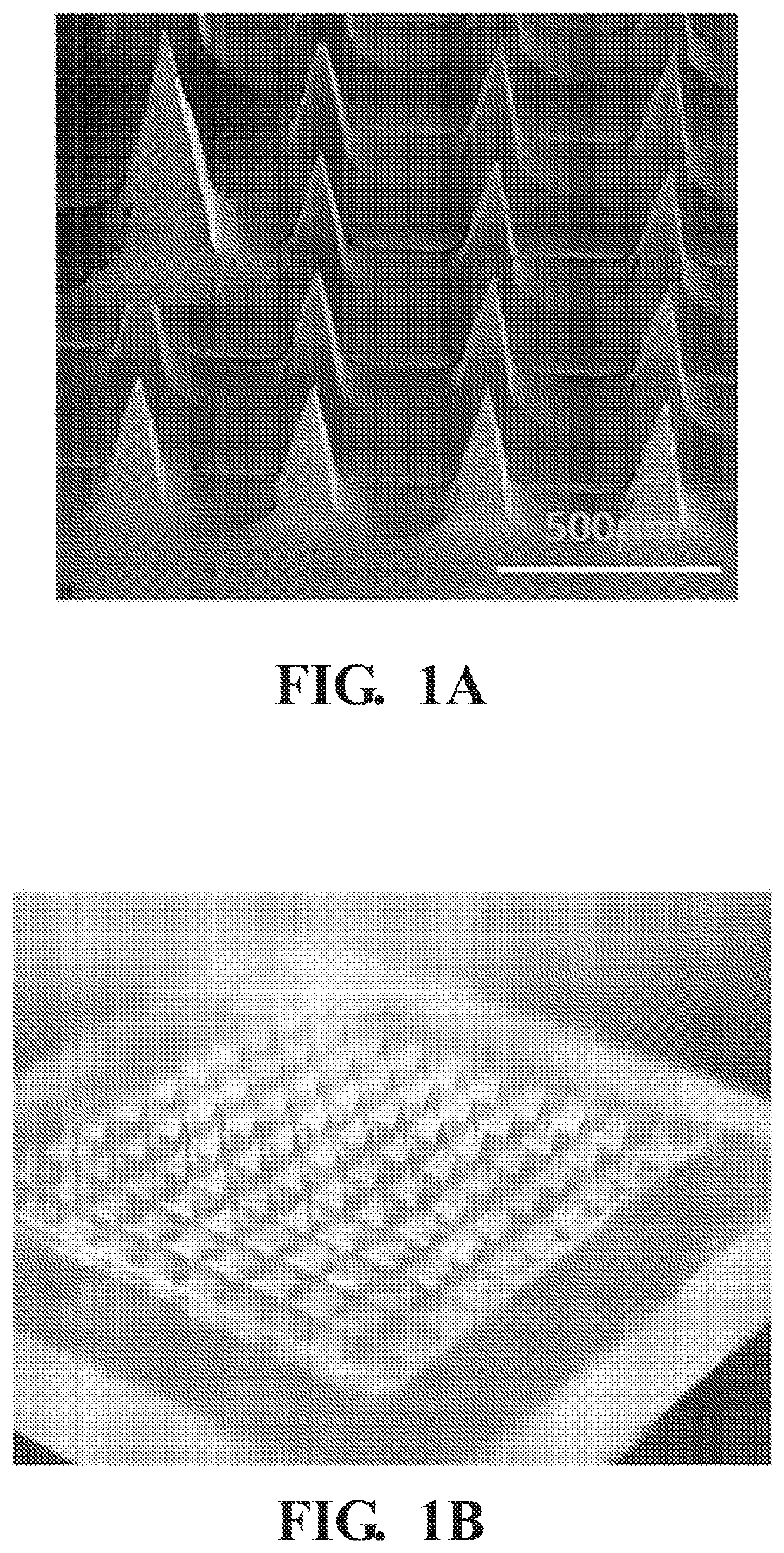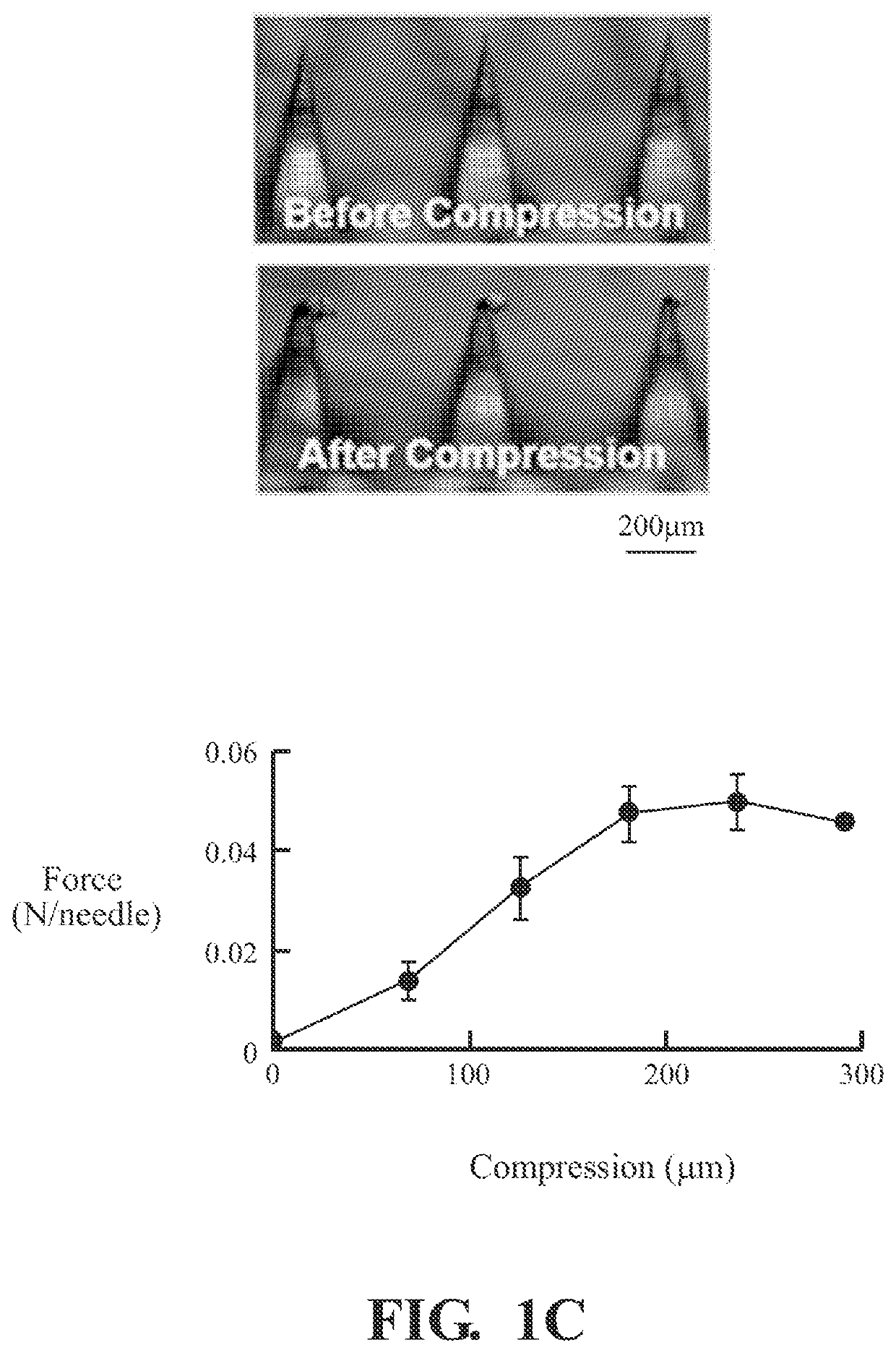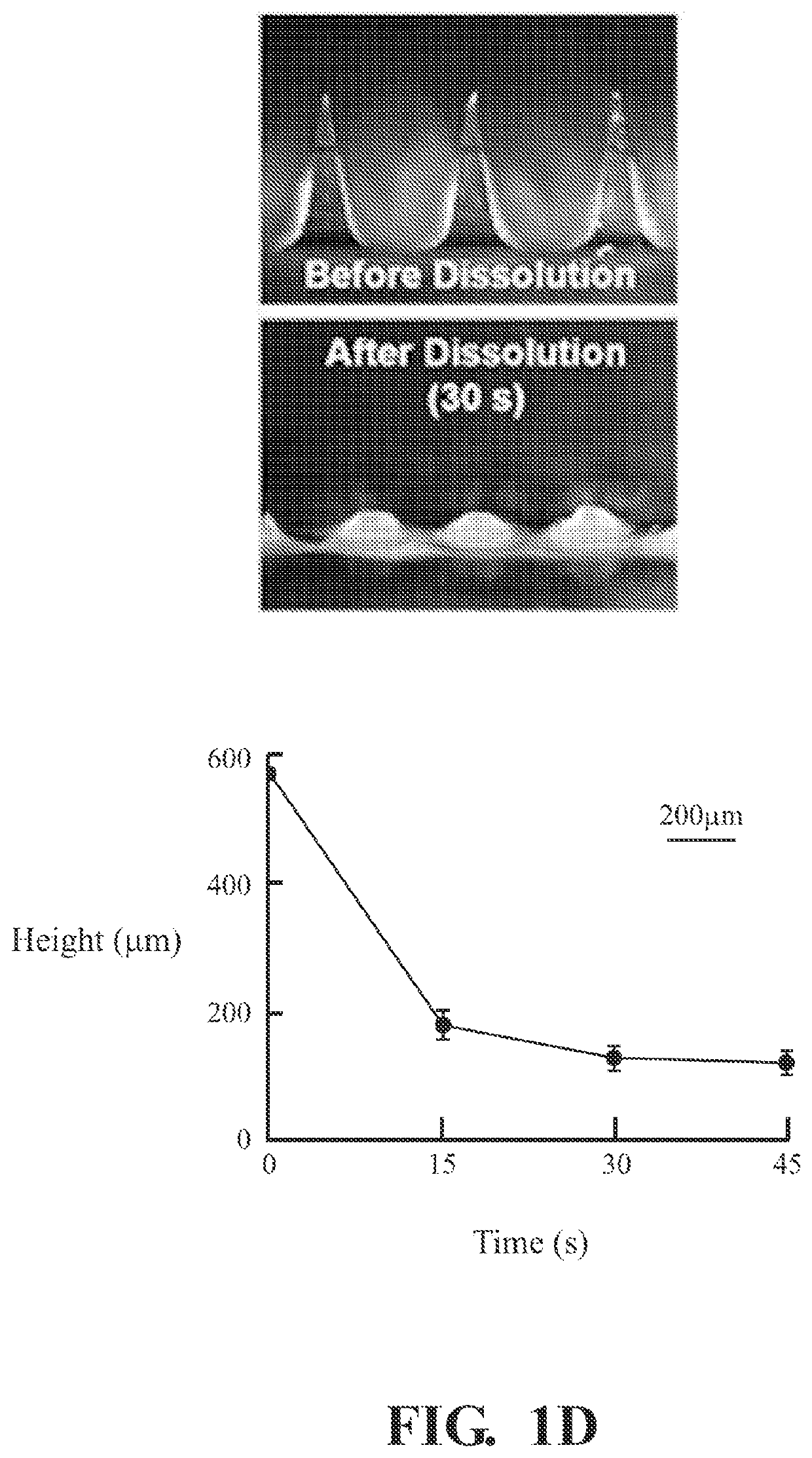Polymer microneedle mediated drug delivery
a technology of polymer microneedles and drug delivery, which is applied in the direction of microinjection based, peptide/protein ingredients, surgery, etc., can solve the problems of high equipment and operator skill level, unhelpful, and difficult to deliver into the diseased heart, and achieves slow “protein release and high local concentration of binding sites
- Summary
- Abstract
- Description
- Claims
- Application Information
AI Technical Summary
Benefits of technology
Problems solved by technology
Method used
Image
Examples
example 1
[0053]2.2.1 General Procedure of Making Microneedle Patches
[0054]In this example, the polymer microneedles are fabricated by casting 20 μL of mHA-DBCO (1 wt %) dissolved in a solution containing N′,N′-methylenebis (acrylamide) (1 wt %) and Irgacure 2959 (0.1 wt %). The microneedle mold is placed in a vacuum chamber for 10 minutes and then centrifuged for 10 minutes at 3000 RCF (relative centrifugal force). Excess polymer may be removed and the process may be repeated three times to ensure all the microneedle cavities are full. After drying, the microneedle molds are exposed to UV light (365 nm) for 2 minutes to initiate crosslinking. Then, 100 μL of HA (4 wt %) is cast to form the microneedle shafts followed by the casting of PVA / PVP to form the microneedle base.
[0055]2.2.2. Method 2 for Delivery of Therapeutic Aptamer
[0056]An azide-modified complementary sequence (CS) that is capable of physically binding to the therapeutic aptamer, is reacted with mHA-DBCO. The reaction results in...
example 2
[0061]2.2.5 General Procedure of Making Microneedle Patches
[0062]The polymer microneedles can be fabricated by casting 25 L of HA-Azide (0.05%) and 25 μL of HA-DBCO (0.05%) The microneedle mold is placed in a vacuum chamber for 10 minutes and then centrifuged for 10 minutes at 3000 RCF (relative centrifugal force). Excess polymer may be removed and the process may be repeated three times to ensure all the microneedle cavities are full. Then, 100 μL of HA (4 wt %) was cast to form the microneedle shafts followed by the casting of PVA / PVP to form the microneedle base.
[0063]2.2.6 Method 2 for Delivery of Therapeutic Aptamers
[0064]An azide-modified complementary sequence (CS) that is capable of physically binding to the therapeutic aptamer, was reacted with HA-DBCO. It resulted in a covalent bond between the polymer and CS (HA-CS). The above procedure, as shown in 2.2.5, was used except the initial casting solution consisted of HA-DBCO, HA-CS, and a therapeutic aptamer. Incorporation of...
PUM
| Property | Measurement | Unit |
|---|---|---|
| height | aaaaa | aaaaa |
| height | aaaaa | aaaaa |
| height | aaaaa | aaaaa |
Abstract
Description
Claims
Application Information
 Login to View More
Login to View More - R&D
- Intellectual Property
- Life Sciences
- Materials
- Tech Scout
- Unparalleled Data Quality
- Higher Quality Content
- 60% Fewer Hallucinations
Browse by: Latest US Patents, China's latest patents, Technical Efficacy Thesaurus, Application Domain, Technology Topic, Popular Technical Reports.
© 2025 PatSnap. All rights reserved.Legal|Privacy policy|Modern Slavery Act Transparency Statement|Sitemap|About US| Contact US: help@patsnap.com



